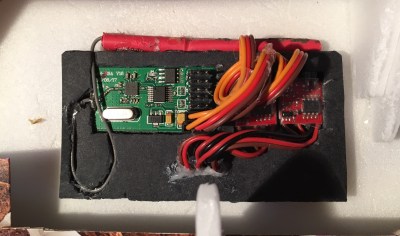Everyone goes through a few phases during their exploration of electrons, and nowhere is this more apparent than the choice of soldering iron. The My First Soldering Iron™ is an iron that plugs directly into the wall, and doesn’t have temperature control. They’re cheap, and electronics isn’t for everyone, giving the quitters the opportunity to take up woodburning as a hobby. The next step up is a temperature controlled iron, probably an Aoyue or Hakko. The best soldering iron? You’re looking at a Metcal or Weller, and your wallet will become a few hundred dollars lighter.
Your My First Soldering Iron™ need not be terrible, though. For his project for The Hackaday Prize, [HP] is working on a soldering iron that is cheap, accurate, and uses the very nice Weller RT tips. No, it’s not as good as a Metcal or proper Weller, but it’s good enough for some fine soldering work and will give the Aoyues and Hakkos a run for their money.
If price is a reasonable measure of the quality of a soldering iron, the irons that use these Weller RT tips are the best irons around. The tips, though, are pretty cheap: about $30, which gets you a heater and thermistor and not much else. There have been numerous reverse engineering efforts for this iron ([1] and [2]), and even a few Arduino-based circuits that replicate the functionality of the Weller base unit.
[HP] is going in a different direction to heat these iron tips. Instead of building a big box to hold the electronics, he’s building everything into the handle of the soldering iron. With brains donated from an ATMega168, a few op-amps, MOSFETS, and a single power jack, [HP] can heat up this soldering iron tip in a compact, hand-held unit.
For his Hackaday Prize entry, [HP] did a rundown of soldering pen in a video. You can check that out below.
Continue reading “Hackaday Prize Entry: A Cheaper Soldering Solution”
























